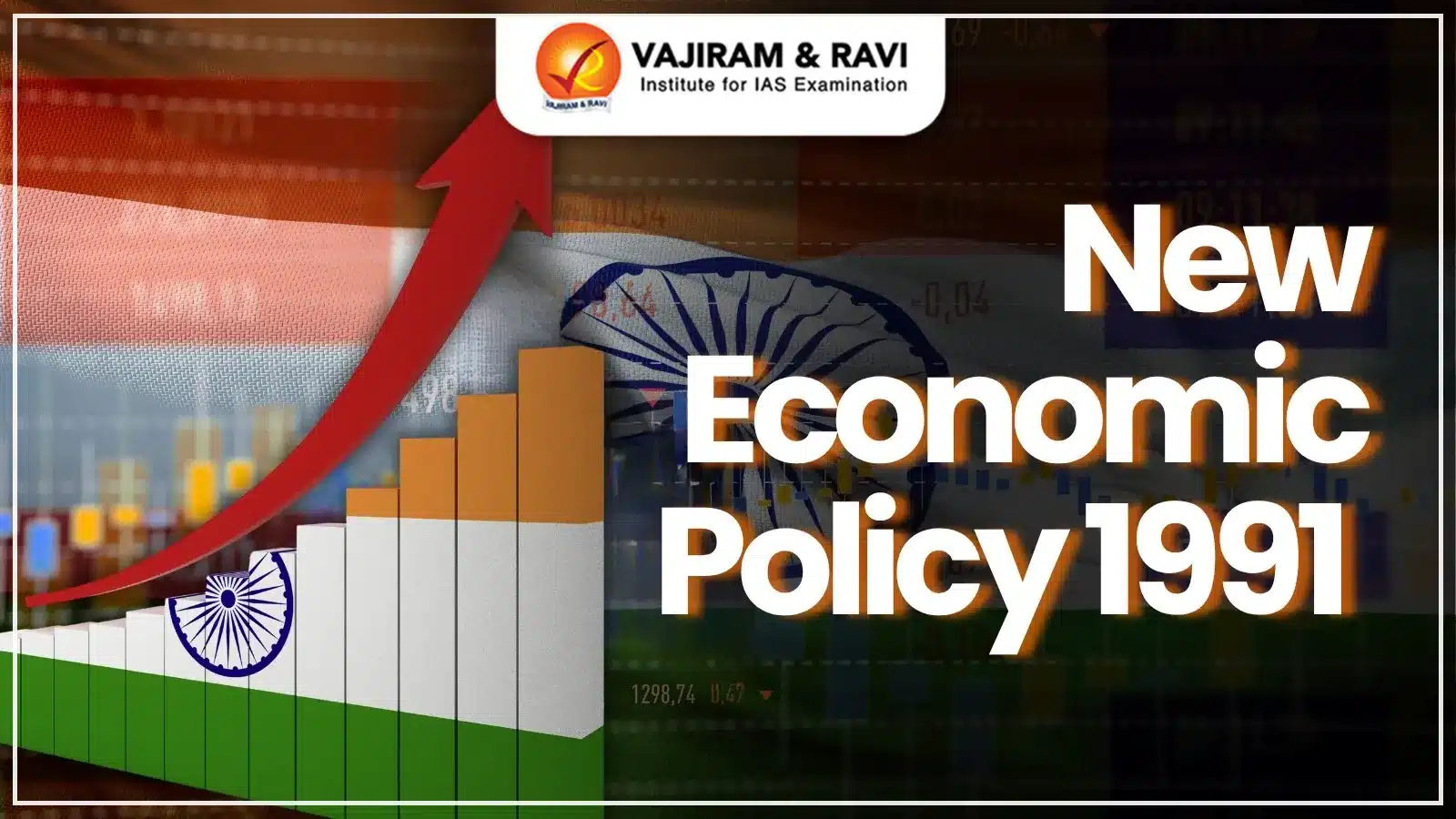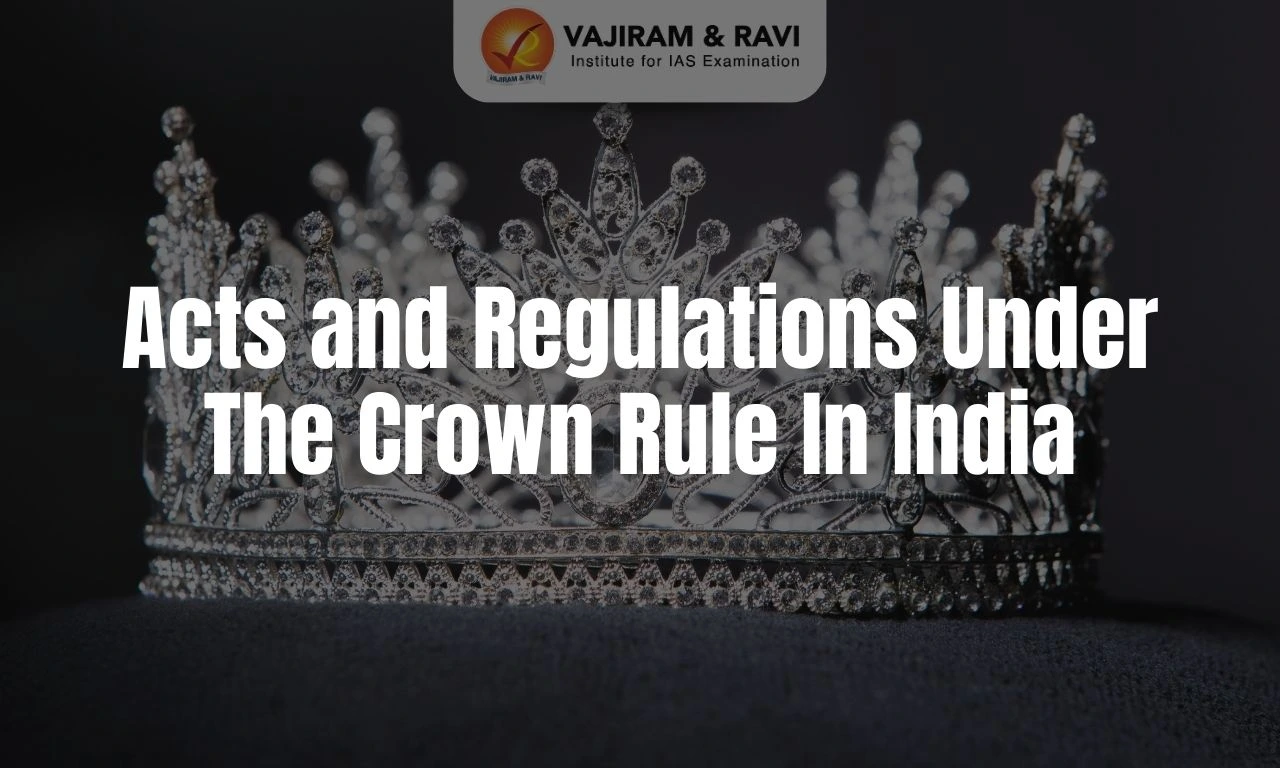New Economic Policy 1991 (NEP 1991) marked a transformative shift in India's economic landscape, steering the country from a closed, centrally planned economy to a more liberalised and market-oriented one. Introduced amidst a severe economic crisis, the NEP aimed to stabilise the economy, enhance efficiency, and integrate India into the global market.
Key components of the policy included liberalisation, privatisation, and globalisation, collectively known as the LPG model. These reforms dismantled the 'License Raj,' reduced the public sector's dominance, and opened avenues for foreign investment, laying the foundation for India's rapid economic growth in the subsequent decades.
New Economic Policy 1991 About
The New Economic Policy 1991 was a comprehensive set of economic reforms initiated by the Indian government under former Prime Minister P.V. Narasimha Rao and former Finance Minister Dr. Manmohan Singh. These reforms were known as the “LPG Reforms”.
- Faced with a balance of payments crisis, dwindling foreign exchange reserves, and mounting fiscal deficits, the government recognised the need for structural changes to revive the economy.
- The policy aimed to reduce government control over the economy, encourage private sector participation, and attract foreign investment.
- By liberalising trade, deregulating industries, and promoting privatisation, the NEP sought to enhance productivity, stimulate economic growth, and integrate India into the global economy.
Factors Leading to New Economic Policy 1991
The New Economic Policy of 1991 was driven by a severe economic crisis marked by a balance of payments deficit, high inflation, fiscal mismanagement, and global pressure for structural economic reforms.
- Fiscal Mismanagement: Excessive public spending and growing subsidies led to high fiscal deficits, with internal debt rising from 35% to 53% of GDP between 1985 and 1991, straining government finances.
- Inefficient PSUs: Public sector undertakings suffered persistent losses due to bureaucratic inefficiency and lack of autonomy, resulting in poor productivity and mounting financial burdens on the state.
- Low Growth: India’s GDP growth averaged just 3.5% before 1991, with industrial output stagnating and failing to generate enough employment or boost overall economic development.
- Balance of Payments Crisis: In 1991, India faced a severe balance of payments crisis, with foreign exchange reserves plummeting to levels sufficient for only a few weeks of imports.
- Globalisation Pressures: Competing economies like China and ASEAN nations liberalised earlier and outpaced India’s growth, pressuring India to reform and integrate with the global market.
- Gulf War: The Iraq War, which occurred between 1990 and 1991, led to a spike in oil prices. Additionally, the inflow of foreign remittances from Gulf countries declined, worsening the economic situation.
- Gold Pledge: To avoid sovereign default, India pledged 67 tonnes of gold as collateral for emergency loans, signalling the severity of the crisis and the urgent need for structural reforms.
New Economic Policy 1991 Objectives
The objectives of the New Economic Policy 1991 aimed to stabilise India's economy, enhance efficiency, boost private sector growth, attract foreign investment, and integrate the Indian economy with global markets through liberal reforms.
- Stabilise the Economy: Control inflation (peaking at 17% in 1991) and restore forex reserves.
- Integrate with Global Economy: Open up the economy to global trade and investment, aligning with international markets and standards.
- Boost Private Sector Role: Encourage private enterprise by reducing barriers to entry and expanding opportunities in various sectors.
- Attract Foreign Investment: Create a conducive environment for Foreign Direct Investment (FDI) to bring in capital, technology, and expertise.
- Enhance Efficiency: Increase productivity and competitiveness by reducing government intervention and promoting market mechanisms.
New Economic Policy 1991 Features
The features of the New Economic Policy 1991 focused on liberalisation, privatisation, and globalisation, aiming to reduce government control, encourage private participation, attract foreign investment, and modernise India’s economic structure.
- Fiscal Discipline: The government aimed to reduce the fiscal deficit to 3–4% in the medium term by cutting subsidies, limiting non-plan expenditure, and introducing tax reforms to enhance revenue.
- Monetary Policy Reforms: A tighter monetary stance was adopted to curb imports and reduce current account deficits, including higher import credit costs and new tools like long-term securities and treasury bills.
- Banking Sector Liberalisation: Banks were given autonomy to set deposit interest rates and decide maturity terms, ending earlier regulatory controls and fostering a more competitive and flexible banking environment.
- Trade Policy Reforms: The rupee was devalued by 18% to boost exports, import restrictions for exporters were eased, and capital goods imports were liberalised without prior government approval.
- Industrial Policy Reforms: Industrial licensing was abolished for most sectors; public sector exclusivity was reduced, and private entry was allowed in key industries, boosting competition and private sector involvement.
- Reforming MRTP Act and Small Industries: The MRTP Act was amended to remove approval requirements for expansion by large firms; small enterprises could now sell up to 44% equity to bigger companies.
- Foreign Direct Investment (FDI) Reforms: FDI caps were raised from 40% to 51% in key industries, and the Foreign Investment Promotion Board was created to fast-track foreign investment clearances.
New Economic Policy 1991 Branches
India’s New Economic Policy, introduced on 24 July 1991, is built on three core pillars—liberalisation, privatisation, and globalisation—aimed at transforming India’s economic structure through key structural reforms.
Liberalisation
Liberalisation involves the relaxation of government regulations and restrictions in the economy to encourage private enterprise and increase efficiency. Key aspects include deregulation of industries, removal of trade barriers, and simplification of tax structures.
- Abolition of Industrial Licensing: Except for 18 industries (reduced later to 6), licensing requirements were eliminated, ending the "License Raj".
- Freedom to Expand/Produce: Businesses no longer needed government approval to expand capacity or diversify products.
- De-reservation of Public Sector: Sectors earlier reserved for public enterprises (like telecom, civil aviation) were opened for private players.
- Financial Sector Reforms: Interest rates were deregulated; CRR and SLR were gradually reduced. Entry of private banks (e.g., ICICI Bank, HDFC Bank) was allowed.
- Trade Liberalisation: Quantitative restrictions were removed; import licensing was abolished for most goods.
- Tax Reforms: Rationalisation of direct taxes and introduction of MODVAT (predecessor to GST) to improve compliance.
Privatisation
Privatisation entails transferring ownership and management of public sector enterprises to private entities. The aim is to improve efficiency, reduce fiscal burdens, and foster competition. Methods include disinvestment, strategic sales, and public-private partnerships.
- Disinvestment of PSUs: The government began selling minority stakes in loss-making and non-strategic public sector undertakings (PSUs). Notable examples include VSNL, BALCO, and IPCL.
- Strategic Sale: Instead of just selling shares, full control of companies was transferred (e.g., Modern Foods to Hindustan Unilever).
- Autonomy to Profitable PSUs: Navratna and Maharatna statuses were introduced, granting financial autonomy to profit-making PSUs like ONGC and IOC.
- Reduction in Reserved Sectors: The number of industries reserved for the public sector was reduced from 17 to just 3 (defence, atomic energy, railways).
- Public-Private Partnerships (PPP): Introduced in sectors like infrastructure, airports, and highways to combine the efficiency of the private sector with public investment.
Globalisation
Globalisation refers to integrating the domestic economy with the global economy through increased trade, investment, and technology transfers. Measures include reducing tariffs, encouraging foreign direct investment, and aligning domestic policies with international standards.
- Currency Convertibility: The rupee was made partially convertible on the current account in 1991; full convertibility on the capital account remains pending.
- Trade Liberalisation: The EXIM Policy 1992 simplified export-import procedures. Peak import tariffs fell from 150% to 50%, integrating India into global supply chains.
- Foreign Direct Investment (FDI): An Automatic route was introduced for FDI in sectors like manufacturing, telecom, insurance, and IT. Equity caps were raised.
- Promotion of Exports: Establishment of Special Economic Zones (SEZs), Export-Import (EXIM) policy simplifications, and incentives to boost exports.
- Joining WTO: India became a founding member of the World Trade Organisation (WTO) in 1995, aligning its trade rules with global standards.
New Economic Policy 1991 Impacts
The New Economic Policy of 1991 significantly transformed India's economic landscape, leading to higher growth, increased foreign investment, expanded private sector participation, and greater global integration, while also posing new developmental challenges.
- Economic Growth: India’s GDP growth rate accelerated post-1991, averaging around 6–7% annually, with double-digit growth in 2006-2007 and projections of 6.2% for 2024, making India the fastest-growing major economy globally.
- Increased Foreign Investment: FDI inflows surged from just $97 million in 1991 to $81.04 billion in FY2024- 25, bringing in capital, technology, and managerial expertise across sectors.
- Expansion of Private Sector: The private sector’s role grew significantly after 1991, driving industrial modernisation, innovation, and job creation, with private enterprises now central to sectors like IT, telecom, and banking.
- Improved Foreign Exchange Reserves: India’s foreign exchange reserves soared from $5.8 billion in 1991 to a record all-time high of $704.89 billion in September 2024, providing a strong buffer against external shocks and covering over 11 months of imports.
- Reduction in Poverty: Reduction in Poverty: Economic growth contributed to a decline in poverty rates, although income inequality became more pronounced. According to a World Bank report, India successfully moved 170 million people out of poverty between 2011-12 and 2022-23, marking a notable reduction in extreme poverty levels.
- Integration with the Global Economy: India became more integrated globally, expanding trade and investment ties, joining major economic forums like the WTO and G20, and signing multiple free trade agreements, boosting exports and foreign engagement.
New Economic Policy 1991 UPSC PYQs
Q1: “Industrial growth rate has lagged behind in the overall growth of Gross- Domestic-Product (GDP) in the post-reform period” Give reasons. How far the recent changes is Industrial Policy are capable of increasing the industrial growth rate? (UPSC Mains 2018)
Q2: How globalization has led to the reduction of employment in the formal sector of the Indian economy? Is increased informalization detrimental to the development of the country? (UPSC Mains 2017)
Q3: Which of the following has/have occurred in India after its liberalization of economic policies in 1991? (UPSC Prelims 2017)
- Share of agriculture in GDP increased enormously.
- Share of India’s exports in world trade increased.
- FDI inflows increased.
- India’s foreign exchange reserves increased enormously
Select the correct answer using the codes given below:
a) 1 and 4 only
b) 2, 3 and 4 only
c) 2 and 3 only
d) 1, 2, 3 and 4
Ans: (b)
Last updated on December, 2025
→ Check out the latest UPSC Syllabus 2026 here.
→ Join Vajiram & Ravi’s Interview Guidance Programme for expert help to crack your final UPSC stage.
→ UPSC Mains Result 2025 is now out.
→ UPSC Notification 2026 is scheduled to be released on January 14, 2026.
→ UPSC Calendar 2026 is released on 15th May, 2025.
→ The UPSC Vacancy 2025 were released 1129, out of which 979 were for UPSC CSE and remaining 150 are for UPSC IFoS.
→ UPSC Prelims 2026 will be conducted on 24th May, 2026 & UPSC Mains 2026 will be conducted on 21st August 2026.
→ The UPSC Selection Process is of 3 stages-Prelims, Mains and Interview.
→ UPSC Result 2024 is released with latest UPSC Marksheet 2024. Check Now!
→ UPSC Prelims Result 2025 is out now for the CSE held on 25 May 2025.
→ UPSC Toppers List 2024 is released now. Shakti Dubey is UPSC AIR 1 2024 Topper.
→ UPSC Prelims Question Paper 2025 and Unofficial Prelims Answer Key 2025 are available now.
→ UPSC Mains Question Paper 2025 is out for Essay, GS 1, 2, 3 & GS 4.
→ UPSC Mains Indian Language Question Paper 2025 is now out.
→ UPSC Mains Optional Question Paper 2025 is now out.
→ Also check Best IAS Coaching in Delhi
New Economic Policy 1991 FAQs
Q1. What is the New Economic Policy of India 1991?+
Q2. Who was the father of New Economic Policy 1991?+
Q3. What is the main feature of the New Economic Policy?+
Q4. What are the main objectives of the New Industrial Policy 1991?+
Q5. What are the objectives of economic policy?+

















